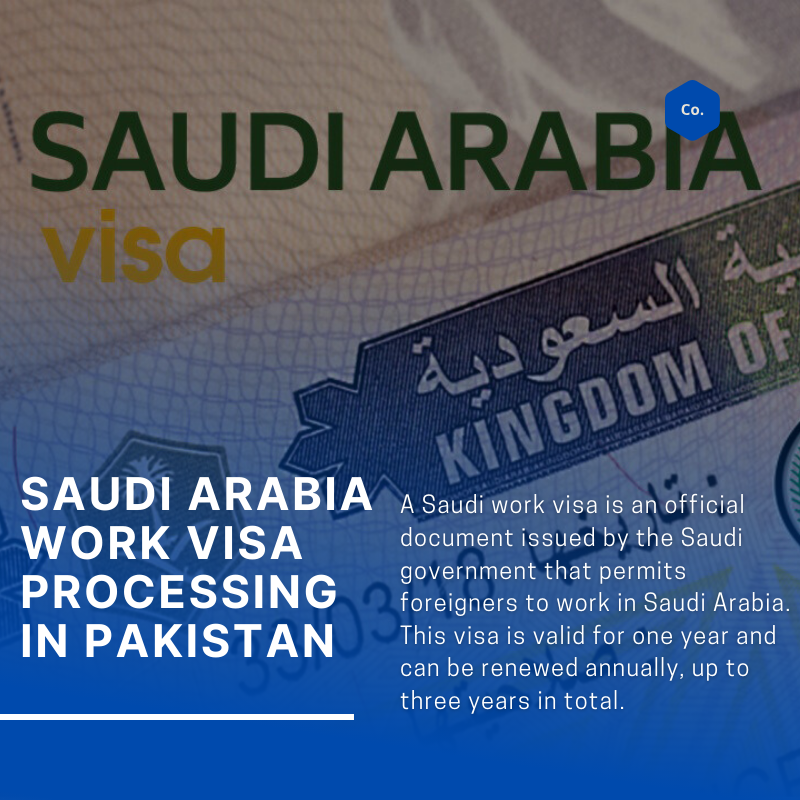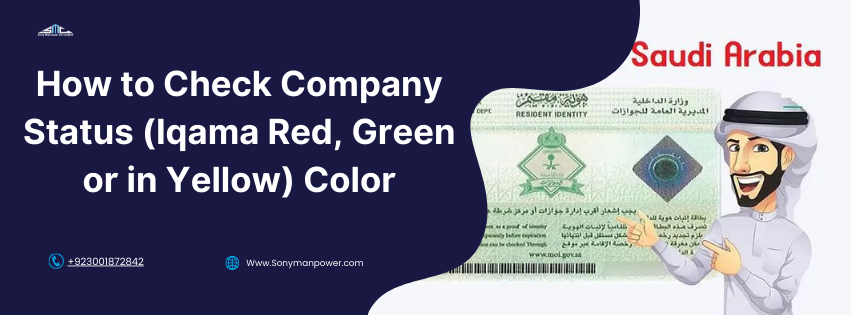Skilled Scaffolders Recruitment In Pakistan For Saudi Arabia

Skilled Scaffolders Recruitment In Pakistan For Saudi Arabia In today’s rapidly evolving construction industry, skilled labor is essential for ensuring safety, efficiency, and quality. One of the most critical roles in construction is that of a scaffolder. Scaffolders provide the necessary support and access for workers to complete projects at various heights. With the booming construction sector in Saudi Arabia, there is a significant demand for skilled scaffolders. Sony Manpower Recruitment Agency in Pakistan is at the forefront of meeting this demand by recruiting qualified scaffolders who are ready to take on new opportunities in Saudi Arabia. Scaffolders: Scaffolders are skilled workers who specialize in the assembly and disassembly of scaffolding systems, which are temporary structures used to support workers and materials during construction or maintenance projects. Here’s a breakdown of their role and responsibilities: Key Responsibilities of Scaffolders: Erecting Scaffolding: Scaffolders set up scaffolding structures according to safety regulations and project specifications, ensuring they are stable and secure for use. Dismantling Scaffolding: After the construction work is complete, scaffolders are responsible for safely taking down the scaffolding and ensuring that all components are returned in good condition. Inspecting Scaffolding: Scaffolders regularly inspect scaffolding for any signs of damage or instability, making necessary adjustments to ensure safety. Following Safety Guidelines: Scaffolders must adhere to strict safety regulations and standards to protect themselves and other workers on the site. Working as a Team: Scaffolders often work closely with other construction workers, including laborers and tradespeople, to coordinate tasks and ensure a smooth workflow. Skills Required for Scaffolders: Technical Knowledge: Understanding the various types of scaffolding systems and their applications, as well as the tools required for assembly and disassembly. Physical Fitness: The job is physically demanding, requiring strength and endurance to handle heavy materials and work at heights. Attention to Detail: Scaffolders must pay close attention to safety protocols and the structural integrity of the scaffolding. Problem-Solving Abilities: Scaffolders need to think critically and quickly address any issues that arise on the job site. Communication Skills: Effective communication with team members is essential for coordinating tasks and ensuring safety. Importance of Skilled Scaffolders Scaffolders are responsible for assembling and disassembling temporary structures that support workers and materials during construction or maintenance projects. Their work ensures that other trades can operate safely and efficiently. Here are some reasons why skilled scaffolders are indispensable: Safety: Scaffolders play a crucial role in ensuring safety on construction sites. Properly erected scaffolding minimizes the risk of accidents and falls, protecting workers and preventing costly delays. Efficiency: Skilled scaffolders can quickly set up and dismantle scaffolding, allowing other trades to begin their work without delay. This efficiency is vital in meeting project deadlines and budget constraints. Compliance: Construction sites must adhere to strict safety regulations and standards. Skilled scaffolders are trained to follow these guidelines, ensuring that the scaffolding is safe and compliant. Versatility: Scaffolders work on various types of projects, from residential buildings to large-scale industrial sites. Their ability to adapt to different environments makes them valuable assets to any construction team. Demand for Scaffolders in Saudi Arabia Saudi Arabia is experiencing significant growth in its construction sector, driven by ambitious projects such as the Vision 2030 initiative, which aims to diversify the economy and reduce dependence on oil. This initiative has led to the development of mega-projects, including: The Red Sea Project, a luxury tourism destination NEOM, a futuristic city being built in Tabuk Various infrastructure projects, including hospitals, schools, and transportation networks With these large-scale developments underway, the demand for skilled scaffolders in saudi arabia has never been higher. Companies in Saudi Arabia are actively seeking qualified workers who can contribute to their projects’ success. This presents a unique opportunity for skilled scaffolders in Pakistan looking to work abroad. Sony Manpower Recruitment Agency: Bridging the Gap Sony Manpower Recruitment Agency is dedicated to connecting skilled Scaffolders from Pakistan with employers in Saudi Arabia. Our extensive experience in recruitment and deep understanding of the construction industry allows us to identify the right candidates for scaffolders’ roles. Here’s how we facilitate this process: Thorough Screening: We conduct rigorous screening processes to ensure that candidates possess the necessary skills, certifications, and experience. This includes verifying qualifications and checking references to guarantee that we only recommend the best scaffolders to our clients. Training and Certification: Understanding the importance of ongoing training, we provide candidates with access to training programs that enhance their skills and knowledge. We also help them obtain necessary certifications that meet international standards. Job Placement: Our recruitment agency maintains strong relationships with various construction companies in Saudi Arabia. We match candidates with suitable job openings, ensuring that their skills align with the project requirements. Support Services: From the initial application process to settling in Saudi Arabia, we provide comprehensive support to candidates. This includes assistance with visa processing, travel arrangements, and orientation to help them adapt to their new work environment. Benefits of Working in Saudi Arabia For scaffolders considering a job opportunity in Saudi Arabia, there are numerous benefits: Competitive Salaries: Skilled scaffolders in Saudi Arabia can expect to earn competitive wages, often higher than those available in Pakistan. Career Growth: The booming construction industry offers ample opportunities for career advancement. Skilled workers can progress to supervisory roles or specialize in different aspects of scaffolding. Cultural Experience: Working in Saudi Arabia provides an opportunity to experience a new culture and lifestyle. Scaffolders can broaden their horizons and gain valuable international work experience. Supportive Environment: Many construction companies in Saudi Arabia prioritize worker safety and welfare, providing a supportive work environment for skilled labor. Final Words The demand for skilled scaffolders in Saudi Arabia presents an excellent opportunity for workers in Pakistan. Sony Manpower Recruitment Agency is committed to facilitating this connection, ensuring that qualified candidates find rewarding job opportunities abroad. With a focus on safety, efficiency, and compliance, skilled scaffolders play a vital role in the construction industry. By partnering with Sony Manpower, scaffolders can take the next step in their
Saudi Arabia Work Visa Processing in Pakistan in 2025

Saudi Arabia Work Visa Processing in Pakistan Saudi Work Visa Overview A Saudi work visa is an official document issued by the Saudi government that permits foreigners to work in Saudi Arabia. This visa is valid for one year and can be renewed annually, up to three years in total. How to Get a Saudi Arabia Work Visa in Pakistan To apply for a Saudi work visa in Pakistan, you must first secure a job offer from a Saudi employer. Your employer will initiate the visa application on your behalf. This process typically takes up to two months. Once your visa is approved, you will need to visit the Saudi embassy or consulate in Pakistan to have the visa stamped on your passport. This stamping process usually takes about two weeks. After your visa is stamped, you can travel to Saudi Arabia and start your new job. Sony Manpower Recruitment Agency in Pakistan specializing in Saudi visa processing can assist you throughout this process. Requirements for a Saudi Work Visa The requirements for a Saudi visa can vary based on your nationality. Generally, all applicants need the following: A valid passport A medical certificate A sponsorship letter from a Saudi employer Additional requirements might include: A criminal background check A no-objection certificate from your current employer A letter of good conduct from your educational institution For specific requirements, it is best to contact the Saudi Embassy or Consulate. Documents Needed for a Saudi Visa When submitting your application to the Saudi Embassy Islamabad, you will need: A valid passport Copies of your educational certificates Copies of your work experience certificates A medical certificate A sponsorship letter from your Saudi employer A completed visa application form More detailed information can be found on the Saudi Embassy website. Saudi Arabia Work Visa Application Process in Pakistan The steps to apply for a Saudi visa are as follows: The Saudi employer requests a visa from the Saudi Arabian Ministry of Labor. The Ministry reviews the request and issues a labor license if approved. The employer submits a visa application to the Saudi Arabian Consulate in Pakistan. The applicant must provide the following documents to the consulate: A valid passport A completed visa application form A medical certificate A copy of the employer’s labor license A copy of the employment contract The consulate reviews the application and issues the visa if approved. This process typically takes 2-4 weeks. Processing Time for a Saudi Work Visa The processing time for a Saudi work visa can vary. In Pakistan, it usually takes 3-4 weeks, while in the United States, it can take 6-8 weeks. Once approved, you will need to schedule an appointment at the Saudi embassy Islamabad or consulate to have your visa stamped, which typically takes 1-2 days. Fees for a Saudi Work Visa The cost of a Saudi work visa varies by type and duration. Here are some examples: Single-entry visa: SAR 2,000 Multiple-entry visa: SAR 3,000 One-year visa: SAR 5,000 Two-year visa: SAR 7,000 Fees can be paid in cash or by credit card. Validity and Renewal of a Saudi Work Visa A Saudi work visa is valid for one year and can be renewed for up to two more years, for a total of three years. To renew your visa, submit the following documents to the Saudi embassy Islamabad or consulate: Your valid Saudi work visa Your passport A copy of your employment contract A medical certificate A police clearance certificate The renewal process typically takes 2-3 weeks. Extending a Saudi Arabia Work Visa To extend your visa, you will need: Your current Saudi visa A copy of your passport A recent pay stub A letter from your employer confirming your employment The extension process usually takes 2-4 weeks. Transferring a Saudi Work Visa If the original visa holder dies, becomes incapacitated, or loses their job, the visa can be transferred to another person. The transfer process involves: The original holder requested the transfer from the Saudi Ministry of Labor. The Ministry approving the request if the new holder meets visa requirements. The new holder paying the necessary fees and submitting required documents. The Ministry issuing a new visa to the new holder. This transfer process can take several weeks, so plan accordingly. Need Assistance? For help with the Saudi visa process, contact our experts in the Sony Manpower recruitment agency in Pakistan today! More Resources: Top Recruitment Agencies in Pakistan For saudi arabia Top Recruitment Agency In Pakistan For Saudi Arabia
Guide to Saudi Arabia Work Visa Processing in Pakistan

Guide to Saudi Arabia Work Visa Processing in Pakistan A Saudi work visa lets people from other countries work in Saudi Arabia. The visa lasts for one year and can be renewed up to three times. To get a visa in Pakistan, you need a job offer from a company in Saudi Arabia. Your employer will handle the visa application for you. This process can take around two months. Once your visa is approved. You need to go to the Saudi embassy or consulate in Pakistan to get your visa stamped. This can take up to two weeks. After your visa is stamped, you can go to Saudi Arabia and start your job. Recruitment agencies in Pakistan can help you with this whole process. Saudi Work Visa Requirement The requirements for a Saudi work visa depend on the applicant’s nationality. Generally, you will need: You may also need: For more information on the specific requirements for getting a visa, please contact the Saudi Embassy or Consulate in your country. Documents Required: The following documents are required for submission of documents to Saudi Embassy in Islamabad: You can find more information on the specific requirements for a Saudi work permit on the Saudi Embassy website. Stamping Process in Pakistan The application process for a Saudi work permit is as follows: Processing Time for a Saudi Work Visa The time it takes to process a Saudi work permit can differ based on the country you’re applying from. For instance, if you’re applying from Pakistan, it usually takes about 3-4 weeks, while applications from the United States may take around 6-8 weeks. After your visa is approved, you need to book an appointment at the Saudi embassy or consulate in your country to get your visa stamped. The stamping process typically takes 1-2 days, although this can vary by location. Once your visa is stamped, you can travel to Saudi Arabia and start working. Fees for Saudi Work Visa The fees for a Saudi work visa vary depending on the type of visa and the length of stay. For example, the fee for a single-entry work visa is SAR 2,000, while the fee for a multiple-entry work permit is SAR 3,000. The fee for a one-year work visa is SAR 5,000, while the fee for a two-year work visa is SAR 7,000. The fees for a Saudi visa can be paid in cash or by credit card. The fees must be paid in Saudi riyals. Validity of Saudi Work Visa A Saudi work visa is valid for one year and can be renewed for up to two more years, therefore allowing a total maximum validity of three years. To renew your Saudi visa, you need to submit the following documents to the Saudi embassy or consulate in your home country: Hence the processing time for renewing a Saudi visa usually takes about two to three weeks. Extensions of Saudi Work Visa A Saudi work permit can be extended for a maximum of two years. Also to extend your visa, you must submit the following documents to the Saudi embassy or consulate in your home country: The processing time for an extension of a Saudi work visa is typically two to four weeks. Do you want help from Saudi Visa Processing Experts from Pakistan? Get in touch with us right now! Transferring a Saudi Work Visa A Saudi work visa can be transferred to someone else if the original holder dies, becomes unable to work, or loses their job. Here’s how to transfer a Saudi visa: It’s important to remember that transferring a Saudi work visa is not automatic. Hence the original holder needs to make the request, and the new holder must meet all the requirements for a Saudi work visa. Hence this process can take several weeks, so it’s good to plan ahead. More Resources: Top Recruitment Agency In Pakistan For Saudi Arabia
Saudi Census 2022: From 2010 to 2022 Census Changes

Saudi Census 2022: From 2010 to 2022 Census Changes Understanding the Saudi Census 2022 The Saudi Census 2022 represents a major step in understanding the Kingdom’s demographic landscape. Conducted by the General Authority for Statistics (GASTAT), the census offers detailed insights into the population structure, housing conditions, and household composition in Saudi Arabia. These findings are crucial for shaping national policies and supporting Vision 2030 objectives. Snapshot of Saudi Arabia’s Population in 2022 According to the latest data, the population of Saudi Arabia stands at 32.2 million people. Out of this total: 58.4% (18.8 million) are Saudi citizens 41.6% (13.4 million) are expatriates Other notable demographics include: Median age: 29 years Youth population (Saudis under 30): 63% Male population: 19.7 million (61%) Female population: 12.5 million (39%) This distribution highlights the country’s youthful nature, with the majority of the population below the age of 30. Comparing 2010 and 2022 Census Results The 2022 census reveals significant demographic changes when compared to the 2010 figures: Data Point 2010 2022 Change Total Population 27.1 million 32.2 million +5.1 million Saudi Citizens 18.7 million 18.8 million +0.1 million Non-Saudis 8.4 million 13.4 million +5 million Median Age ~26.5 years 29 years Slight increase The most striking difference lies in the growth of the non-Saudi population, reflecting the Kingdom’s ongoing reliance on foreign workers. Youthful Energy: The Power of a Young Population One of the most important findings is the youthful demographic: over 63% of Saudis are under 30. This trend has direct implications for sectors like education, employment, housing, and healthcare. Planning for a future driven by youth requires investments in schools, job training, and modern infrastructure. Gender Breakdown and Implications The 2022 figures show a higher male population: Males: 19.7 million Females: 12.5 million This gender gap is partly due to the large number of male expatriate workers. Recognizing this distribution is important for designing gender-responsive services in health, employment, and education. Geographic Spread: Major Cities and Population Centers Saudi Arabia’s population is not evenly distributed. Urban centers like Riyadh, Jeddah, Makkah, Madinah, and Dammam have seen significant growth. Understanding this helps in efficient resource distribution and urban planning, especially for infrastructure, public services, and transportation systems. Housing Data: A Look into Residential Life The Kingdom now has over eight million residential units. Interestingly: Apartments make up 51% of all housing This reflects the rising trend of urbanization and the growing preference for apartment living in city areas. This data is essential for guiding real estate investments and housing development projects. Saudi Households: Composition and Size There are around 4.2 million Saudi families Average Saudi family size: 4.8 members Average non-Saudi family size: 2.7 members Among non-Saudis, men make up 76% of the group, a statistic that aligns with the employment-focused migration patterns into the country. Backcasting: How Far Has the Kingdom Come? The 2022 census uses a technique called backcasting to compare with past data: Population growth from 2010 to 2022: +8.2 million Saudi citizens increase: +4.8 million Non-Saudis increase: +3.5 million This method offers a deeper perspective on long-term population trends, helping decision-makers understand where growth is happening and why. Smart Data Collection: Technology Driving Accuracy The 2022 census benefited from technological advancements, including: Satellite mapping Self-enumeration tools Automated data verification With a confidence level of 95%, these tools ensured more precise data collection than ever before. Field visits and data correction techniques helped validate the information, boosting its reliability. Commitment to Transparency and Data Privacy GASTAT emphasized both data security and public transparency. By using international best practices and high confidentiality standards, the agency has built public trust and encouraged active participation in national statistics efforts. Policy Impact: Using Census Data for National Development The census provides a foundation for shaping economic and social strategies. It supports government goals such as: Developing inclusive education systems Expanding healthcare infrastructure Improving housing and transportation Supporting labor market reforms Moreover, the census directly contributes to realizing the goals of Vision 2030, helping Saudi Arabia build a thriving society, a vibrant economy, and an ambitious nation. Addressing Public Concerns: GASTAT’s Official Response Following the data release, some observers questioned discrepancies with previous figures (like those from 2015). GASTAT President Dr. Fahad Aldossari clarified: The 2022 census used cutting-edge tools for better accuracy Economic events, like the COVID-19 pandemic, influenced non-Saudi population trends Backcasting was applied to ensure continuity and understanding of past trends This response reinforces the reliability of the 2022 data and underlines GASTAT’s commitment to improving statistical practices. Conclusion: Saudi Census 2022 in Perspective The Saudi Census 2022 is more than just numbers—it’s a roadmap for the future. By leveraging modern technology, maintaining transparency, and analyzing population trends, Saudi Arabia has created a powerful tool for national development. As the country advances toward the goals set in Vision 2030, this data will be instrumental in guiding policy, shaping infrastructure, and ensuring sustainable growth. The insights from the census serve not only Saudi policymakers but also global investors and researchers looking to understand the Kingdom’s evolving dynamics. Frequently Asked Questions (FAQs) 1. What is the Saudi Census 2022, and why is it important?It’s a national population and housing survey that provides insights essential for planning infrastructure, services, and national development strategies. 2. What is the total population according to the 2022 census?32.2 million people, with 58.4% Saudis and 41.6% non-Saudis. 3. How does the 2022 census compare to the 2010 data?There has been a population growth of 8.2 million, including significant increases among both Saudis and expatriates. 4. What does the census say about housing in Saudi Arabia?There are over 8 million residential units, and apartments account for more than half of them. 5. How does the youthful population impact national planning?With 63% of Saudis under 30, the government needs to prioritize education, employment, and youth engagement initiatives. 6. What technologies were used in the 2022 census?Satellite imagery, self-reporting tools, automated error detection, and modern data analysis techniques. 7. How does the census support Vision 2030?It provides accurate, up-to-date data to
Easiest way to update your Iqama in ANB Bank

Easiest way to update your Iqama in ANB Bank If you’re a Saudi expatriate and your Iqama (residency permit) is about to expire, don’t worry! Keeping your Iqama up-to-date is important for many things, including banking. Fortunately, updating your Iqama with ANB (Arab National Bank) is straightforward. In this guide, we’ll show you how to update your Iqama with ANB Bank online. You can do this in three simple ways. Method 1: How to Update Your Iqama in ANB Bank Online Updating your Iqama with ANB Bank online is simple. Just follow these eight steps: Log in to the ANB App Open the ANB app and sign in with your username and password. Receive OTP Get a one-time password (OTP) sent to your registered phone number. Access Menu Tap on the three-dot icon to open the menu. Update Information Select “Update My Information” from the menu. National ID Update Click on “National ID Info” and then choose “Update.” Enter OTP Input the OTP you received on your mobile. Error Handling If you see an error notification, don’t worry—your Iqama will still be updated. Verification Check To confirm the update, go back to “Update My Information” and “National ID Card.” Method 2: How to Update Your Iqama in ANB Bank Through Internet Banking Updating your Iqama through ANB Bank’s internet banking is straightforward. Follow these nine steps: Log into ANB Internet Banking Access your ANB Internet Banking profile with your username and password. Receive OTP After logging in, an OTP (One-Time Password) will be sent to your registered phone number. Access the Menu Click on the three-dot icon located on the left side of the screen to open the menu. Select “Update My Information” Choose “Update My Information,” which is usually the second-to-last option in the menu. Choose “National ID Info” A window will appear with several options. Select “National ID Info.” View Your ID Information Your ID details will be displayed. Click the “Update” button at the bottom. Receive Another OTP After clicking “Update,” you’ll receive another OTP. Enter this code and press “Enter.” Possible Error Notification If you encounter an error notification, don’t worry—your Iqama update will still be processed. Approval To confirm the update, repeat the process: click the three dots on the left, select “Update My Information,” then “National ID Card.” By following these steps, you can easily update your Iqama through ANB’s internet banking, ensuring your account remains in good standing and compliant with Saudi regulations. Method 3: How to Update Your Iqama by Visiting a Branch To update your Iqama at an ANB Bank branch in Saudi Arabia, follow these eight simple steps: Visit the Bank Go to the nearest ANB Bank branch during business hours. Check the branch locations and hours on the bank’s website or call them for details. Bring Required Documents Take your current Iqama (residency permit) and any other identification documents the bank may need. Approach the Customer Service Desk Once inside, go to the customer service desk or any available bank staff. Inform them that you need to update your Iqama information. Fill Out Forms The staff will give you the necessary forms to complete. These forms will ask for your updated Iqama details, such as the new Iqama number and expiry date. Submit the Forms and Documents After filling out the forms, submit them along with your current Iqama and any other required documents to the bank staff. Wait for Processing The bank will process your request to update your Iqama information. This might take a little time, so please be patient. Receive Confirmation Once your Iqama information is updated in the bank’s system, you’ll receive a confirmation message or receipt from the bank staff. Verify Updated Information Before leaving, check to make sure your Iqama information has been correctly updated in the bank’s records. Important Considerations: Always keep your Iqama up-to-date to avoid issues with banking transactions and legal matters. If you encounter any difficulties or have questions about updating your Iqama, don’t hesitate to contact ANB Bank’s customer support. They are there to assist you. Final Words: Updating your Iqama with ANB Bank is easy, thanks to their user-friendly online platform. This guide provides a clear, step-by-step process to keep your Iqama information current, ensuring uninterrupted access to ANB’s banking services. For expatriates in Saudi Arabia, staying updated is crucial, and ANB Bank makes the process convenient and straightforward. Frequently Asked Questions: How Can I Update My Iqama in Saudi Arabia? Log in to the ANB App: Open the ANB app and sign in with your username and password. Receive OTP: You’ll get a one-time password (OTP) sent to your registered phone number. Access the Menu: Click on the three-dot icon to open the menu. Choose “Update My Information”: Select this option to proceed. Select “National ID Info”: Click on “Update” to modify your Iqama details. Enter the OTP: Input the OTP received on your mobile to complete the update. How Do I Activate My ANB Account? To activate your ANB account, visit a physical ANB Bank branch in Saudi Arabia. The staff will guide you through the activation process and provide the necessary details and access to your account. What Is My ANB Account Number? You can find your ANB account number on your account statement or by logging into your ANB online banking portal. It’s a unique identifier for your account. How Can I Open an ANB Account Online in Saudi Arabia? Visit ANB’s Website or App: Go to ANB’s website or download their app. Complete the Online Application Form: Fill out the form with your personal information. Provide Required Documents: Submit the necessary documents as per ANB’s instructions. Wait for Approval: ANB will review your application and, once approved, send you your account details. Start Using Your Account: After approval, you can begin using your ANB account. What Should I Do If I Encounter Issues While Updating My Iqama in ANB Bank Online? If you face any problems or have questions
Check Company Status (Iqama Or Nitaqat) Color

Check Company Status (Iqama Or Nitaqat) Color KSA Iqama Color Check If you’re living in Saudi Arabia as an expatriate, knowing about the Iqama and company Status Colors is important. This guide will help you understand what the Red, Green, and Yellow Iqama categories mean. These colors show how well a company is doing in hiring Saudi nationals. Since 2011, the Nitaqat program has been sorting companies based on how many Saudis they employ. This makes it easy to see how well a company is following the hiring rules. This guide will explain how to check your Iqama and company Status step by step. It’s easy to read, ensuring that expatriates understand what each color means. Keeping an eye on your company’s Nitaqat status is like staying updated on important work and residency decisions. Are Checking Company Status and Verifying Iqama Status Two Different Processes? When you check a company’s status, you’re looking at its Nitaqat color. It’s like a rating that shows how well the company follows the rules about hiring Saudi nationals. The colors are Green, Red, or Excluded, and each color has a specific meaning for the company and its employees. When you verify Iqama status, you’re checking a person’s permission to stay in Saudi Arabia. For expatriates working there, the Iqama status can be Platinum, High Green, Low Green, or Red. Each color indicates different things about their job situation. So, checking a company’s status is like looking at how good it is at hiring locals, while verifying Iqama is about making sure an individual has the right to stay and work in Saudi Arabia. Two different things, but both are important! Understanding Nitaqat Categories and Iqama Colors The Saudi Ministry of Labor launched the Nitaqat program in June 2011 to promote hiring Saudi nationals in the private sector. The Iqama Color, also known as the Nitaqat Color, categorizes companies into different levels: What Does an Iqama Green Status Mean? Represents a high rate of Saudization if the Iqama is in the Green category. Simplifies visa processing for expatriate workers. Enables sponsorship transfers without needing Kafeel’s approval. Allows employees to change their profession. Permits Iqama renewal up to three months before it expires. What is the Iqama Status Color Yellow? The Ministry of Labor abolished the Yellow category on January 26, 2020. Companies previously in the Yellow category were moved to the Red category. What if the Iqama Status Color is Red? Imposes Restrictions: A Iqama status red indicates significant challenges for the company. No New Visas: The company cannot issue new visas for foreign employees. No Sponsorship Transfers: Transfers of sponsorship from other sponsors are not permitted. Limited Renewal Options: Options for renewing Iqamas are restricted. Restricted Profession Changes: Employees cannot change their job titles or professions. No New Branches: The company is not allowed to open new branches. Excluded Category (مستبعد) Applicable Criteria: This category applies to companies with fewer than six registered employees. Exemption Status: Companies in the Excluded category are exempt from Nitaqat requirements. Compliance Equivalent: In terms of compliance, it is considered equivalent to the Green category. How to Check Your Iqama Color Status: 6 Simple Steps Go to the Ministry of Labor Website: Visit https://mol.gov.sa/. Find the Non-Saudi Employee Inquiry Page: Look for the section dedicated to Non-Saudi employee inquiries. Enter Identification Numbers: Input your Iqama number, border number, or passport number. Verify with Image Code: Enter the displayed image code for verification. Click the “Search” Button: Hit the search button to proceed. View Your Status: The results will show your Iqama Color Status, indicating whether your company falls into the Platinum, High Green, Low Green, or Red category. What is Company Nitaqat Status? Iqama Red or Green in Saudi Arabia? Understanding your company’s Nitaqat status is key for job security and career stability in Saudi Arabia. Here’s how you can check your Kafeel-Sponsor-Company Nitaqat color online: How to Check Company Nitaqat Status (Iqama Red or Green) in Saudi Arabia: Visit the Saudi Ministry of Labor Website: Go to the official website. Enter Iqama (Muqeem) Number: Find the second text box labeled “رقم اللقامه.” Input your Iqama (Muqeem) number into this box. Enter Image Code: Below the image, type the provided code into the fourth box. Initiate the Search: Press Enter or click the “Search” button to begin the inquiry. To check your MOL KSA Iqama status, follow these steps: Visit the Ministry of Labor Website: Go to the official MOL website: Ministry of Labor, Saudi Arabia. Access Iqama Services: Look for the section dedicated to expatriate services or specifically for checking Iqama status. Enter Required Information: Enter your Iqama number or border number in the designated field. Submit and View Status: Submit the form to view your MOL KSA Iqama status. This will allow you to see whether your company is classified as Red or Green under the Nitaqat system. Understanding Company Nitaqat Status: Green, Yellow, and Red Colors Platinum Status (): Meaning: Excellent Saudization rate. Implication: The company employs a high number of Saudi nationals, indicating a stable and supportive work environment. Green Status (?): Meaning: Good Saudization rate. Implication: Your job position is secure as Kafeel supports Saudization efforts, and the company is performing well in meeting Saudization requirements. Yellow Status (?): Meaning: Needs improvement. Implication: The company should work on increasing job opportunities for Saudi citizens to improve its Saudization rate. Red Status (?): Meaning: Low Saudization rate. Implication: The company may face restrictions and limited benefits due to its low level of Saudi employment. Tips for Action According to Company Status 1. Frequent Checks: Regularly verify your company’s Nitaqat status to stay updated on its compliance and performance. 2. Communication with Management: Discuss Saudization efforts with company officials to support and enhance the hiring of Saudi nationals. Additional Considerations 3. Checking Domestic Workers and Dependents: Note that the Iqama Color Status cannot be checked for domestic workers and dependents, as they are not registered with the Ministry of Labor. 4. Moi.gov.sa Disclaimer: While many


